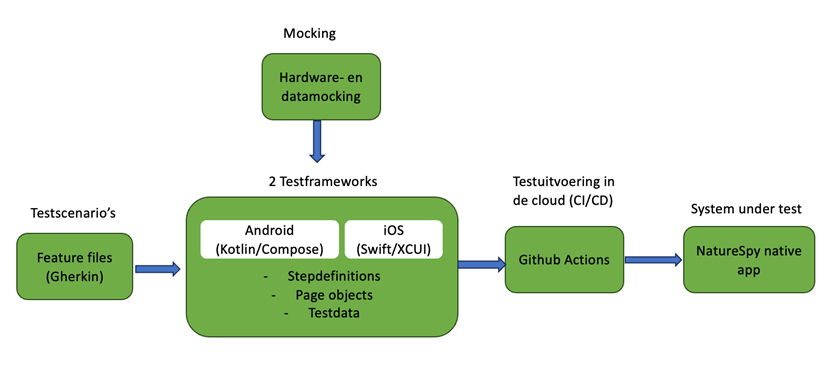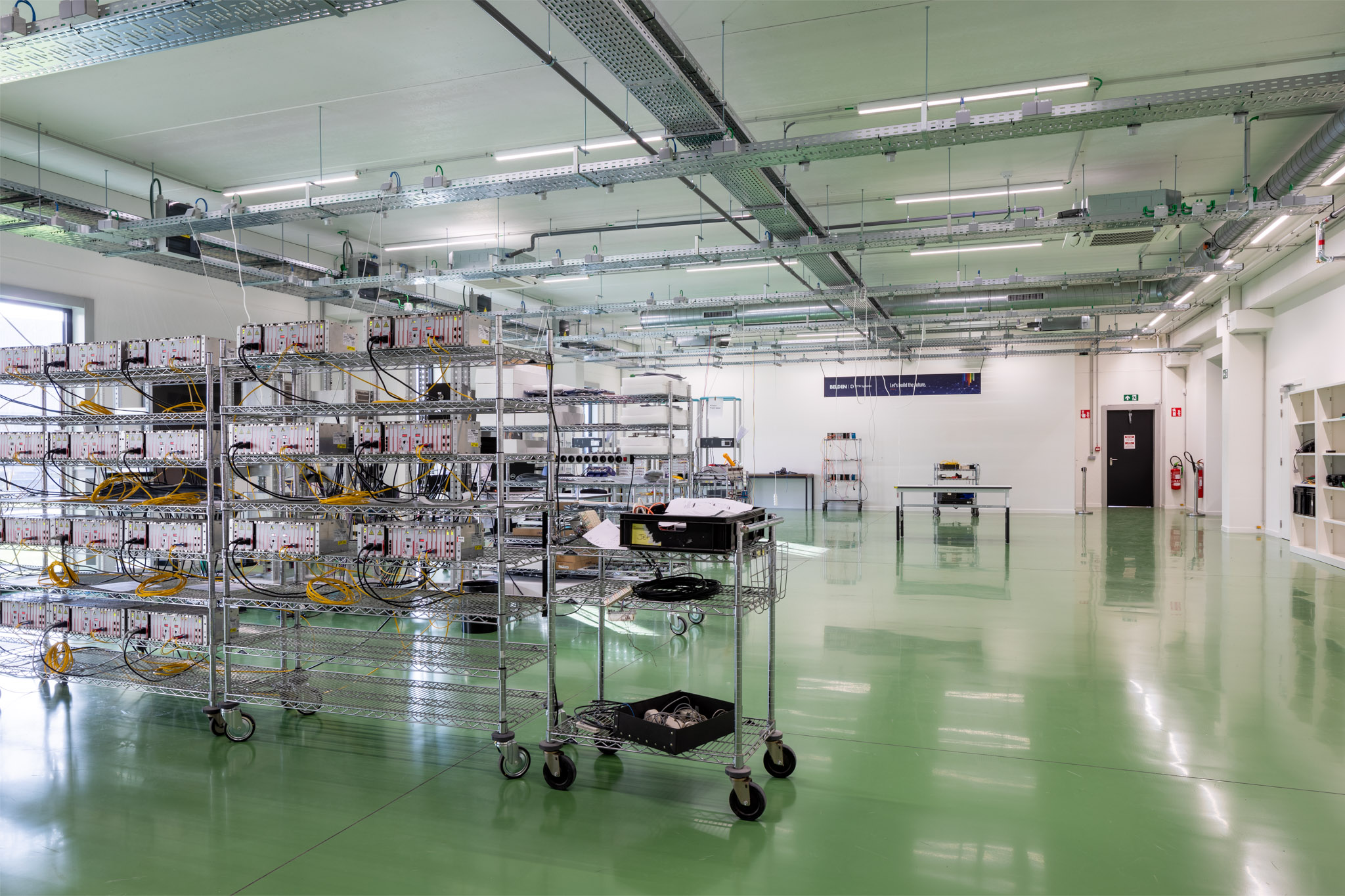NatureSpy: hardware simulation in mobile test automation
NatureSpy is a UK-based nonprofit that combines conservation and technology in a unique way. Their model is powerful: sales of high-quality wildlife cameras directly fund their conservation projects. With a team of biologists and more than a decade of field experience, they deploy technology for sustainable wildlife experience and protection. Each camera and app feature aims to make nature accessible without disturbing it.
The project ran through Q42, a partner of Polteq. Q42 develops software for NatureSpy and engaged Polteq to ensure the quality of the mobile apps. Our two test specialists rotated fully into the scrum team, from refinements to retros. This allowed test scenarios to connect directly to development and made quality a shared responsibility within the team.
Challenge: mobile app testing without a physical camera
NatureSpy’s Android and iOS apps allow users to link cameras and use features such as motion detection and a bird identifier. Because the apps rely on physical cameras, manual testing quickly proved time-consuming and error-prone. The key question: how do you make this testing process scalable, reliable and repeatable, without always needing hardware?
Hardware mocking central
Together with Q42’s developers, mock cameras and mock scenarios were set up. These mimic the pairing and use of a camera, including the return of test images. Polteq integrated these mocks into the test framework and used them to run realistic scenarios automatically. This allowed all crucial functions – from pairing to image processing – to be tested in a fully automated way, without dependence on real cameras.

Data-driven testing with JSON profiles
The strength of the approach lay in test data-driven work. All cameras, user profiles and events were captured in JSON files, making varied scenarios easy to configure and repeat. This allowed us to vary with different types of cameras, accounts and linking situations without having to change the structure of the framework.
In addition, JSON files were used to populate the camera views with mock data. This allowed activity and playback events to be realistically recreated, including simulated images and videos. For example, consider a motion detection event or playback recording completely without the need for a physical camera to be available. Thus, we not only tested the functional logic of the apps with realistic data, but also validated the user experience in the interface.
Each test could then be run in different configurations simply by selecting different JSON data. This made the framework flexible, scalable and future-proof, as well as easily extensible to new scenarios
One set of scenarios, two platforms
A separate test framework was set up for both Android (Kotlin/Compose) and iOS (Swift/XCUI), both based on Cucumber. The scenarios were written in Gherkin so that the business and product owner could also understand the test cases. The same feature files were used for both platforms. Both frameworks were set up with the Page Object Model (POM), data-driven principles and BDD. This created a unified and maintainable way of testing that simplified collaboration with developers and increased efficiency.
Regression in the cloud, validation with real hardware
All automated regression tests run on simulators via GitHub Actions, revealing issues immediately after each code change. In addition, we tested the apps on real devices, both with and without connected cameras. This validated the automation suite and revealed important UI and UX issues that you only discover manually.
For this project, we were able to use Q42’s devices, so no additional test lab was needed. However, there is always the possibility of using the Polteq Mobile Test Lab, where a wide range of physical devices is available.
Result: reliability and trust
Thanks to this approach, NatureSpy’s apps have become significantly more reliable and future-proof. New features can be rolled out with confidence, while users are assured of stable apps that correctly link their cameras and reliably support nature observations. For NatureSpy, this means that their
social mission – to harness technology for conservation and connection with nature – is more strongly founded than ever.
The following services were used for this case:
“The automatic UI test setup by Mats and Ibrahim for Android and iOS integrates perfectly into our apps, is maintainable set up and can be easily extended through smart use of various tools and techniques. The cooperation between the test team and developers was good and reinforces the overall focus on app quality.“
Willem van Vliet, project manager Q42



